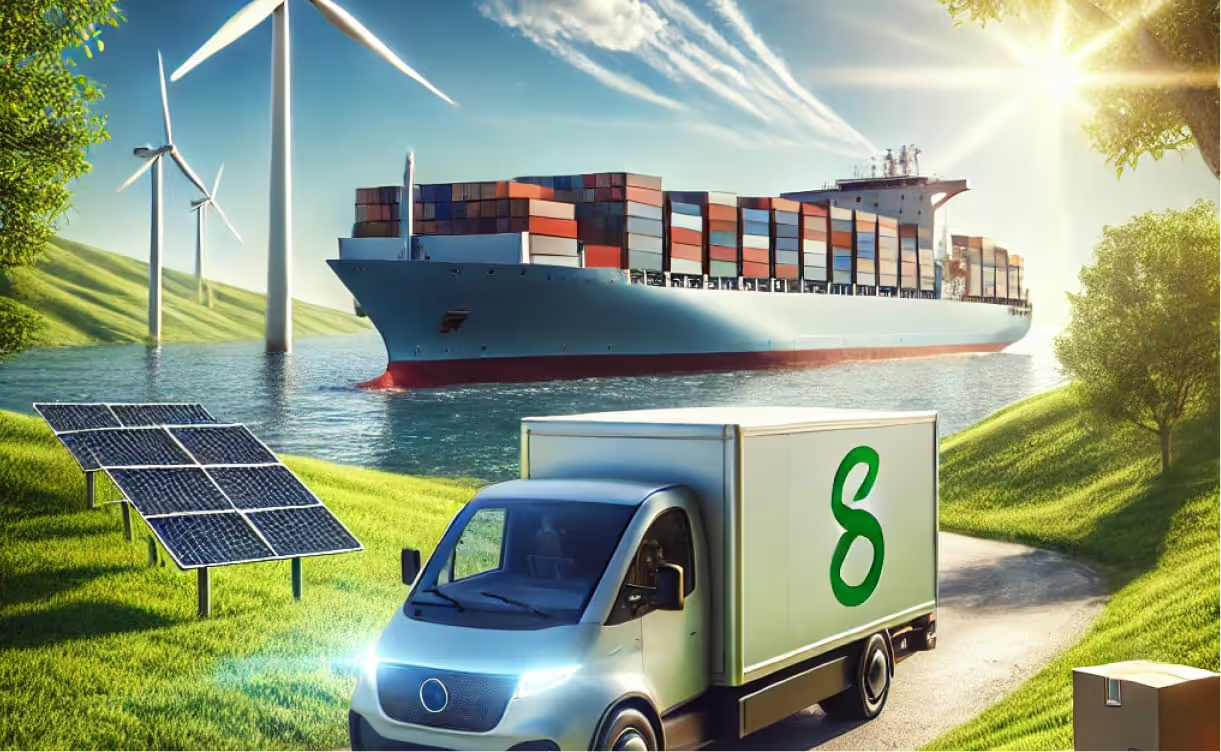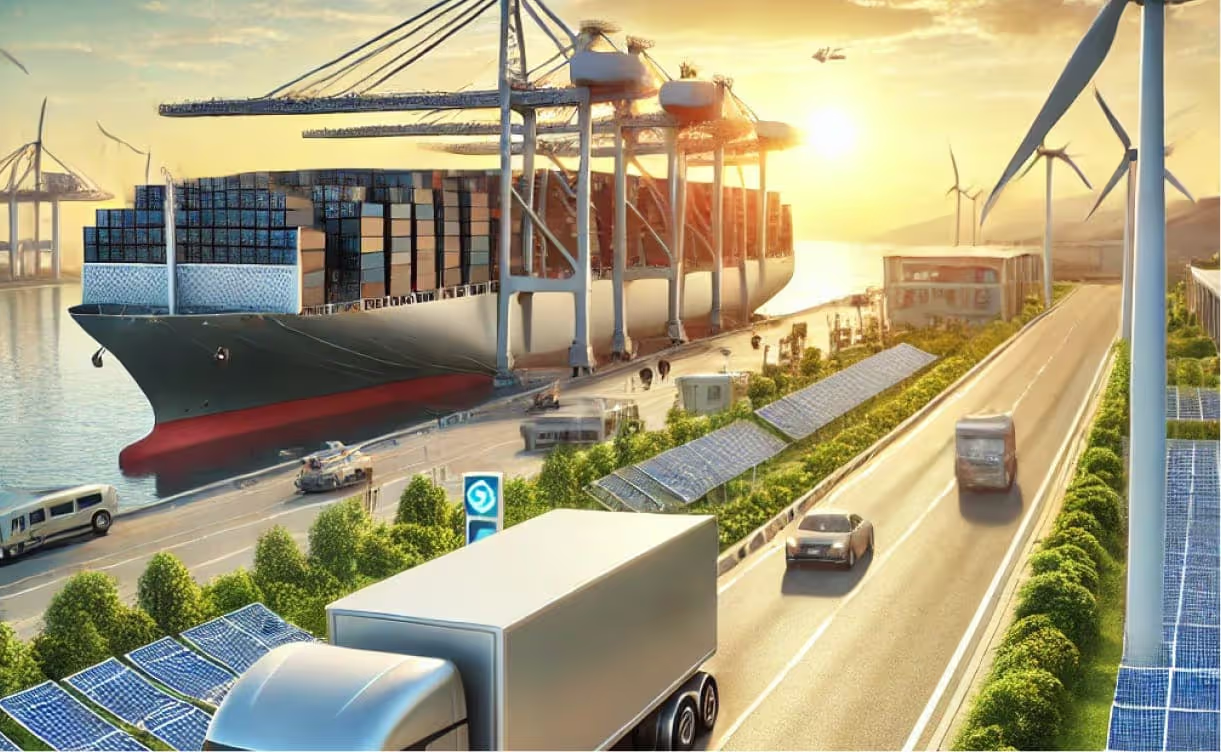Multi-Modal Shipping: Combining Land, Sea, and Air for Optimal Delivery
JANUARY 13, 2025

The growing demand for efficient and sustainable transportation has led to significant advancements in eco-friendly shipping practices. As global trade expands and e-commerce continues to thrive, the environmental impact of goods transportation has become a critical concern. Companies are now exploring innovative methods to reduce carbon footprints and embrace greener logistics strategies.
This comprehensive guide explores the latest eco-friendly shipping options and practices, offering businesses actionable insights to minimize environmental impact while ensuring efficient deliveries across land, sea, and air.

Transportation accounts for a significant percentage of global greenhouse gas (GHG) emissions. The logistics sector’s reliance on fossil fuels contributes to:
Climate change.
Air pollution.
Depletion of natural resources.
Eco-conscious consumers increasingly demand sustainable practices from businesses. Offering eco-friendly shipping options helps build brand loyalty and enhances corporate reputation.
Governments worldwide are implementing stricter environmental regulations. Compliance with these rules is essential for businesses to avoid penalties and maintain operations.
Switching from traditional fossil fuels to alternative, low-carbon options is a significant step toward greener logistics:
Biofuels: Derived from renewable sources like vegetable oils and animal fats, biofuels reduce GHG emissions.
Hydrogen Fuel Cells: Producing only wa ter as a byproduct, hydrogen is a clean energy source for heavy-duty vehicles and ships.
Electric Vehicles (EVs): Ideal for last-mile d eliveries, EVs eliminate tailpipe emissions.
Liquefied Natural Gas (LNG): A cleaner alternative to diesel for ships and trucks, LNG reduces CO2 emissions by up to 20%.
Many logistics companies are transitioning to electric and hybrid fleets for reduced emissions:
Electric Trucks: Used for urban deliveries and shorter routes, they are silent and produce zero emissions.
Hybrid Ships: Combining traditional engines with electric power, these vessels offer greater fuel efficiency.
Energy efficiency is critical for reducing environmental impact:
Smart Warehouses: Equipped with solar panels, energy-efficient lighting, and automated systems to minimize energy use.
Green Ports: Incorporate onshore power supplies and advanced waste management systems to lower emissions.
Using advanced software and GPS technology, companies ca n optimize delivery routes to:
Reduce fuel consumption.
Minimize idle time.
Avoid congested areas.
Maximizing truck capacity ensures fewer trips and lower emissions. Strategies include:
Consolidating shipments.
Using modular containers for flexible loading.
Training drivers in eco-driving techniques reduces fuel consumption and emissions. Key practices include:
Maintaining consistent speeds.
Avoiding unnecessary acceleration.
Reducing idling.
Modern cargo ships are incorporating wind-assist technologies, such as:
Rotor sails.
Kite systems.
These systems reduce fuel usage by harnessing wind energy.
Shipbuilders are designing vessels with:
Hydrodynamic hulls for reduced resistance.
Advanced engines optimized for cleaner fuels.
Ballast water treatment systems to prevent ecological harm.
Operating ships at reduced speeds, known as slow steaming, minimizes fuel consumption and lowers emissions.
SAFs are made from renewable resources like algae, waste oils, and agricultural residues. They:
Reduce lifecycle emissions by up to 80%.
Are compatible with existing aircraft engines.
Aircraft manufacturers are developing electric and hybrid planes for short-haul flights. These innovations promise:
Zero emissions during flight.
Lower noise pollution.
Airlines offer carbon offset options, allowing customers to invest in:
Reforestation projects.
Renewable energy initiatives.
Eco-friendly shipping extends beyond transportation to include packaging. Businesses can adopt the following practices:
Replace traditional plastics with biodegradable materials like:
Plant-based plastics.
Mushroom packaging.
Cornstarch-based products.
Encourage customers to return packaging for reuse, reducing waste.
Use the least amount of material necessary to protect goods, reducing waste and costs.
Opt for packaging made from recycled materials, such as paper and cardboard, to lower resource consumption.

AI-driven systems optimize logistics by:
Predicting demand to reduce overstocking.
Planning efficient delivery schedules.
IoT devices monitor shipment conditions and vehicle performance in real-time, enabling:
Improved fuel efficiency.
Proactive maintenance.
Enhanced tracking.
Blockchain ensures transparency and accountability by:
Tracking carbon footprints.
Validating the use of sustainable practices.
Software solutions help businesses calculate emissions from logistics operations, enabling:
Benchmarking.
Identifying areas for improvement.
Companies can neutralize their carbon footprints by investing in:
Renewable energy projects.
Forest conservation efforts.
Carbon capture technologies.
Collaborate with logistics partners who prioritize sustainability and offer:
Carbon-neutral shipping options.
Environmentally friendly fleets.
Amazon’s initiatives include:
Electric delivery vehicles.
Investments in SAFs.
Carbon-neutral shipping goals by 2040.
Maersk is revolutionizing sea transport with:
Carbon-neutral ships powered by methanol.
Wind-assisted propulsion systems.
DHL’s green logistics programs focus on:
Electric vehicles for last-mile delivery.
Green packaging solutions.
Emerging technologies include:
Autonomous electric cargo ships.
Hydrogen-powered aircraft.
Smart logistics platforms integrating sustainability metrics.
Governments and international organizations are introducing stricter emissions standards, driving the adoption of greener practices.
Consumer awareness and preferences will continue to push businesses toward more sustainable shipping solutions.
Eco-friendly shipping is no longer optional but a necessity for businesses aiming to thrive in a competitive and environmentally conscious market. By adopting sustainable practices and technologies, companies can reduce their environmental impact, meet consumer expectations, and comply with regulatory requirements.
From alternative fuels and energy-efficient infrastructure to innovative packaging and advanced technologies, the path to sustainable logistics is paved with opportunities. By prioritizing eco-friendly shipping, businesses contribute to a greener future while achieving long-term success in the global marketplace.